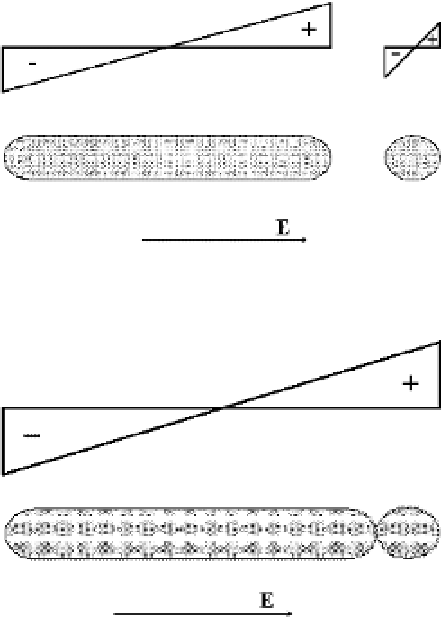Environmental Engineering Reference
In-Depth Information
are formed at altitudes of several kilometers where the atmospheric temperature is
close to 0
ı
C. Interaction of ice particles with water drops may be of importance for
charge separation in the atmosphere [170-176].
Taking ice aerosols with needle shape and liquid aerosols as spherical drops, we
give in Figures 6.24 and 6.25 the mechanism of charging in an external electric
field. Then the needle particle is polarized such that charges are located at its ends,
and contact with a spherical particle leads to charge transfer to the spherical parti-
cle and correspondingly to charging of the needle particle, which is neutral at the
beginning. But charging by collision of ice and liquid aerosols also occurs in the
absence of an external electric field. Indeed, contact of these aerosols creates an
interface potential that leads to charge transfer between aerosols. Assuming this
interface potential to be large compared with the thermal energy of aerosols, one
can estimate a typical charge
Z
of each aerosol such that the potential of their at-
traction after charge transfer does not exceed the thermal aerosol energy
T
,that
is,
Z
2
e
2
r
0
T
.
Figure 6.24
Distribution of charges induced under the action of a uniform electric field in join-
ing of cylindrical and spherical particles of identical radius.
Figure 6.25
Redistribution of charges as a result of joining of cylindrical and spherical particles.

